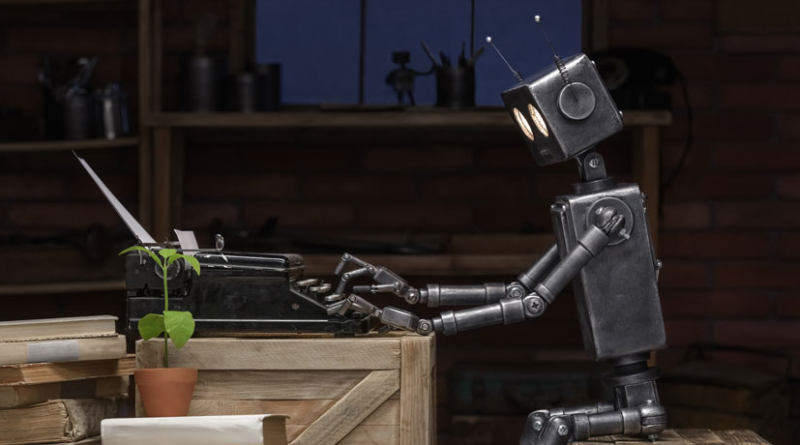The Onion headlines could teach AI what makes satire funny – Science News Magazine
Every print subscription comes with full digital access
An analysis of The Onion headlines reveals the mechanics of humor writing
HEADLINE HOW-TO A new analysis of the differences between real and joke headlines reveals a how-to formula for aspiring satirists — human and AI alike.
Vasilyev Alexandr/Shutterstock
By
HONOLULU — Good news for aspiring satirists: Scientific analysis of real and joke headlines has uncovered a hack for writing witty one-liners.
To identify the secret ingredients of satire, researchers compared farcical headlines with nearly identical, but unfunny headlines. The investigation, presented January 31 at the AAAI Conference on Artificial Intelligence, revealed a strategy for changing words in serious statements to make them satirical. The technique could help AI write its own jokes or distinguish satire from fake news (SN: 8/4/18, p. 22).
The researchers compiled a dataset of satirical and serious headlines using the online game Unfun.me, where players edit humorous headlines from the satirical publication The Onion as little as possible to make them serious. These tweaks “put a finger onto the exact switch that induces the humor,” says Robert West, a computer scientist École Polytechnique Fédérale de Lausanne in Switzerland. He and coauthor Eric Horvitz, director of Microsoft Research in Redmond, Wash., amassed about 2,800 serious versions of nearly 1,200 headlines.
Most of the joke headlines followed a common logical structure, which West and Horvitz call “false analogy.” Words switched between spoof and serious headlines share a crucial similarity, as well as a fundamental difference.
Consider the humorless headline “BP ready to resume oil drilling” and its comedic counterpart “BP ready to resume oil spilling.” Subbing spilling for drilling works because both share the critical commonality of being activities famously associated with BP, but with one being intended and the other accidental. West and Horvitz identified several types of oppositions between words in serious and satirical headlines, such as modern versus outdated, human versus animal and obscene versus not.
These findings could help programmers create AI systems that better understand and have more natural interactions with humans, says Dan Goldwasser, an AI and natural language processing researcher at Purdue University in West Lafayette, Ind., not involved in the analysis. Other research on computational humor has focused on simply predicting whether a text is comical; a more fundamental knowledge of satire’s structure could help AI understand why something is funny and create humor of its own.
But the false analogy formula alone is not enough to build an AI that cranks out witticisms, Goldwasser says. Knowing what is and isn’t obscene, for example, requires a lot of common sense that AI generally doesn’t have yet.
Sponsor Message
The insights can also help humans try their hand at satire. After decoding the false analogy pattern, West used the sublime versus mundane opposition to transform the headline “2018 Bordeaux vintage benefits from outstanding grape harvest” into “2018 Pepsi vintage benefits from outstanding high-fructose corn harvest.”
Even for a human, “it’s still hard to make a headline that really punches,” West says. “But at least there is some recipe now.”
Questions or comments on this article? E-mail us at feedback@sciencenews.org | Reprints FAQ
R. West and E. Horvitz. Reverse-engineering satire, or “Paper on computational humor accepted despite making serious advances.” Thirty-Third AAAI Conference on Artificial Intelligence, Honolulu, January 31, 2019.
R. West and E. Horvitz. Reverse-engineering satire, or “Paper on computational humor accepted despite making serious advances.” arXiv:1901.03253. Posted January 10, 2019
Previously the staff writer for physical sciences at Science News, Maria Temming is the assistant managing editor at Science News Explores. She has bachelor’s degrees in physics and English, and a master’s in science writing.
We are at a critical time and supporting science journalism is more important than ever. Science News and our parent organization, the Society for Science, need your help to strengthen scientific literacy and ensure that important societal decisions are made with science in mind.
Please subscribe to Science News and add $16 to expand science literacy and understanding.
Science News was founded in 1921 as an independent, nonprofit source of accurate information on the latest news of science, medicine and technology. Today, our mission remains the same: to empower people to evaluate the news and the world around them. It is published by the Society for Science, a nonprofit 501(c)(3) membership organization dedicated to public engagement in scientific research and education (EIN 53-0196483).
© Society for Science & the Public 2000–2024. All rights reserved.
Subscribers, enter your e-mail address for full access to the Science News archives and digital editions.
Not a subscriber?
Become one now.



